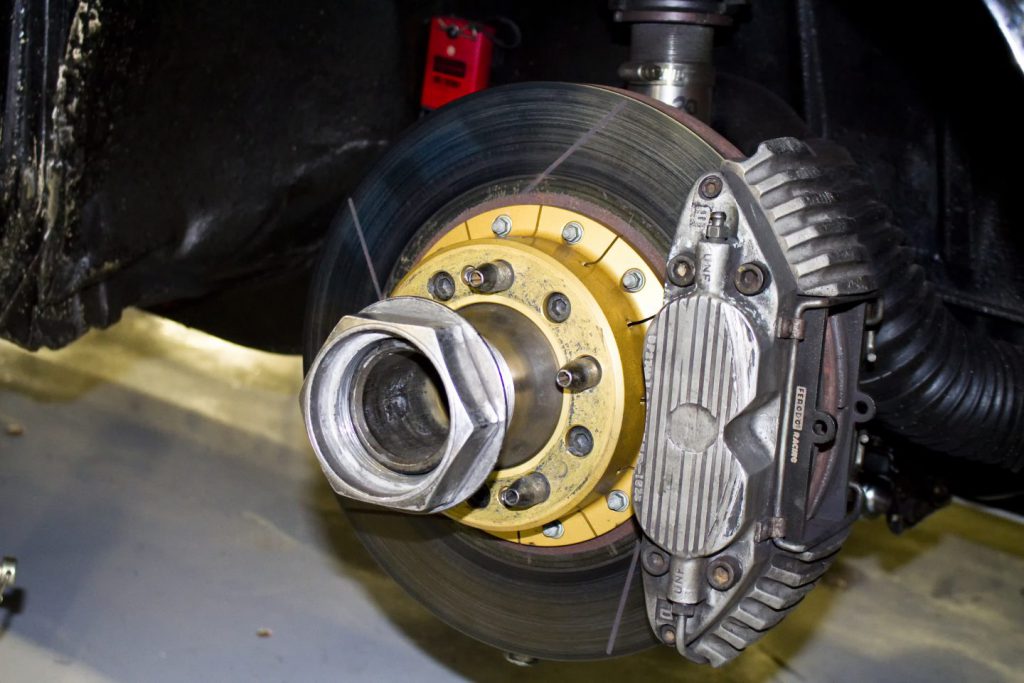
The old motorsport adage, “to finish first, first you must finish”, is very true. The chances of crossing the finish line is much higher if you have the full complement of wheels still attached to the car.
The importance of your wheels is often overlooked. I mean, they’re there or they’re not, right? Competition wheels are subjected to greater strain than typical car wheels and as such you need to ensure that they’re fully secured before you take to the circuit. The thing is, there are so many different wheel spacers and fixings available, all designed to create the optimum setup, and it can be difficult to know which ones you need. Until now that is.
Competition wheel fixing terminology
Wheel fixings are quite simple but there are pitfalls to be wary of and some of the component’s names are often confused. The following guide will clear up any confusion.
Wheel studs
The wheel stud protrudes from the wheel hub, with the wheel sitting over the studs and secured by the wheel nuts. The wheel stud is externally threaded, typically M12 or M14, and the thread pitch can vary so care must be taken to match the studs and nuts. The wheel studs are fixed into the hub from the rear and are pressed or drifted in place. The stud is splined to prevent it rotating when the nuts are tightened.
Some makes of car can have wheel studs that have the same thread, but different splines. Mazda is a good example. Sometimes the front and rear are different splines on the same car. If fitting longer studs it is very important to select the correct spline to suit the application.
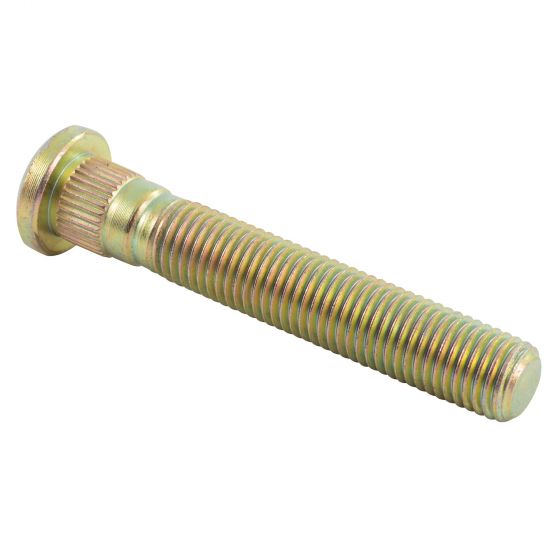
Wheel bolts
The wheel bolt passes through the wheel and screws into the threaded hub. The hub with the wheel removed will show female threaded holes. The bolt needs to be the correct length: long enough that the thread length holds the wheel in place, and not too long that it interferes with parts behind the hub. The wheel bolt is normally externally threaded with a hexagon head, but can sometimes have a splined or Allen key head (normally where this very little space around bolt head.)
The bolt can have a 60-degree tapered seat, cone shaped view from side on. This seating is used on most cars with original wheels and 99% of aftermarket wheels. The other common seating used is radius seating, which are ball shaped from side on. This is typically used on VAG group cars like Mercedes and Porsche OE alloy wheels. Wheel bolt threads are typically M12 or M14 with various pitches, and another less common seating is a flat style used on some Peugeot or Citroen original equipment alloy wheels.

Wheel nuts
The wheel nut screws over the externally threaded wheel stud and tightens against the wheel. The wheel nut can be 60-degree tapered seat, radius seat, or flat seat depending on the application and wheels.
A wheel nut can be either open ended or closed end. Open end is useful if the hub has long studs as there is no chance of the nut bottoming on the stud. Some wheels on older cars can have what are known as sleeve nuts which, as the name suggests, have a sleeve that goes inside the wheel where the hole is much bigger than the wheel stud. The sleeve diameter needs to match the size of the wheel hole. The seating at the top of the wheel hole can be tapered or flat usually a washer slips over the sleeve nut and saves damaging the wheel face.
Older Toyota and Nissan models, and some 1970’s Ford’s, have sleeve nuts with flat seating. Newer Ford’s and some Rover’s can have sleeve nuts with tapered seats. The tapered seats can be different angles so care must be taken to ensure they match. The length of the sleeve nut is measured from the base of the washer to the end. A sleeve nut should be almost but not quite flush with the back of the wheel hole looking from the inside.

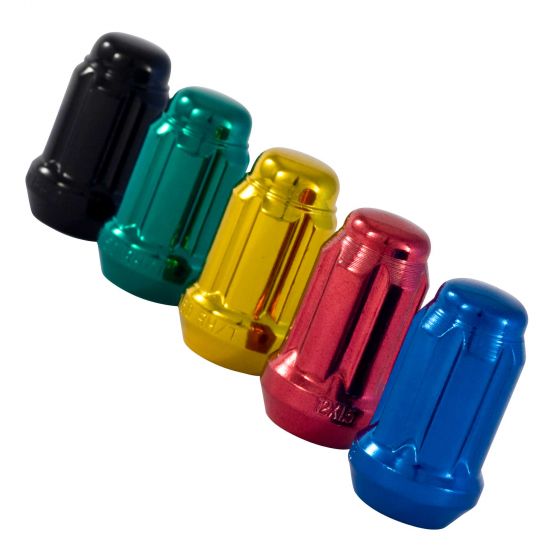
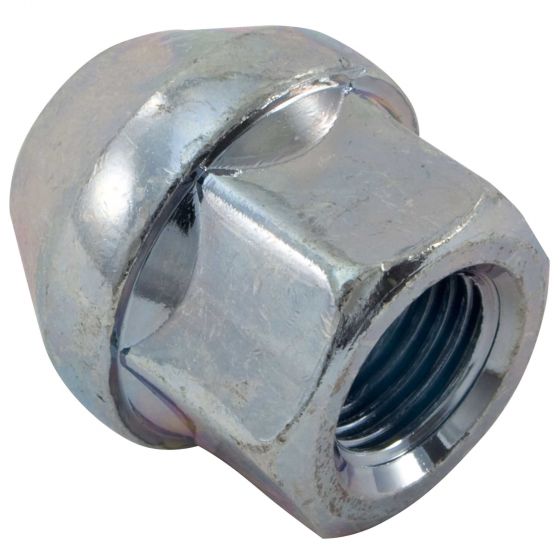
Conversion studs
Cars that have wheel bolts as standard can be a problem where fast wheel changes are required. A conversion stud screws in to the hub and leaves a thread protruding. This means the wheel can be slide over the thread like a car with studs and the wheel secured by a nut.
The studs are measured end to end and can be anything from 40mm long up to 100mm. It is common to use thread lock on the hub side of the conversion stud. Most conversion studs are the same thread both ends but some change the outer thread, useful if you have existing nuts or the nuts required are a different thread from the existing thread. The conversion studs normally have an unthreaded section or a small collar to allow the studs to be tightened against the hub.
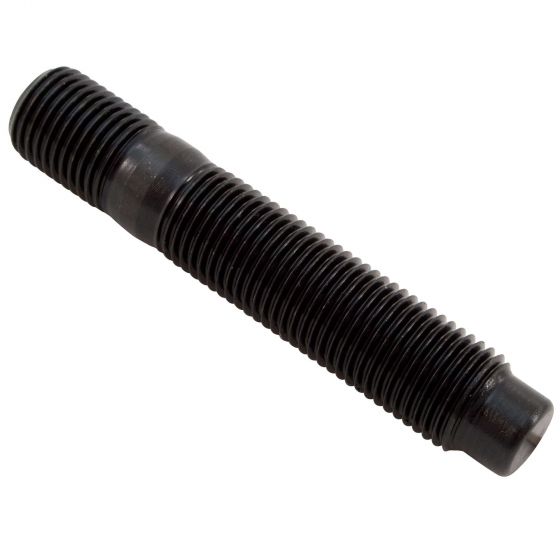
Hub spigot
The wheel hub on modern cars has a locating spigot (protruding nose) that the wheel locates on and transfers the weight of the vehicle via the hub. This means the wheel fixings do not have to bear the load and can just hold the wheel to the hub. The hub spigot prevents radial movement of the wheel to correctly centre the wheel. Car manufacturers use many different diameters, so some aftermarket wheels come with interchangeable spigot or centre rings that match the spigot size. Some older cars with wheel stud fixings do not have hub spigots though.
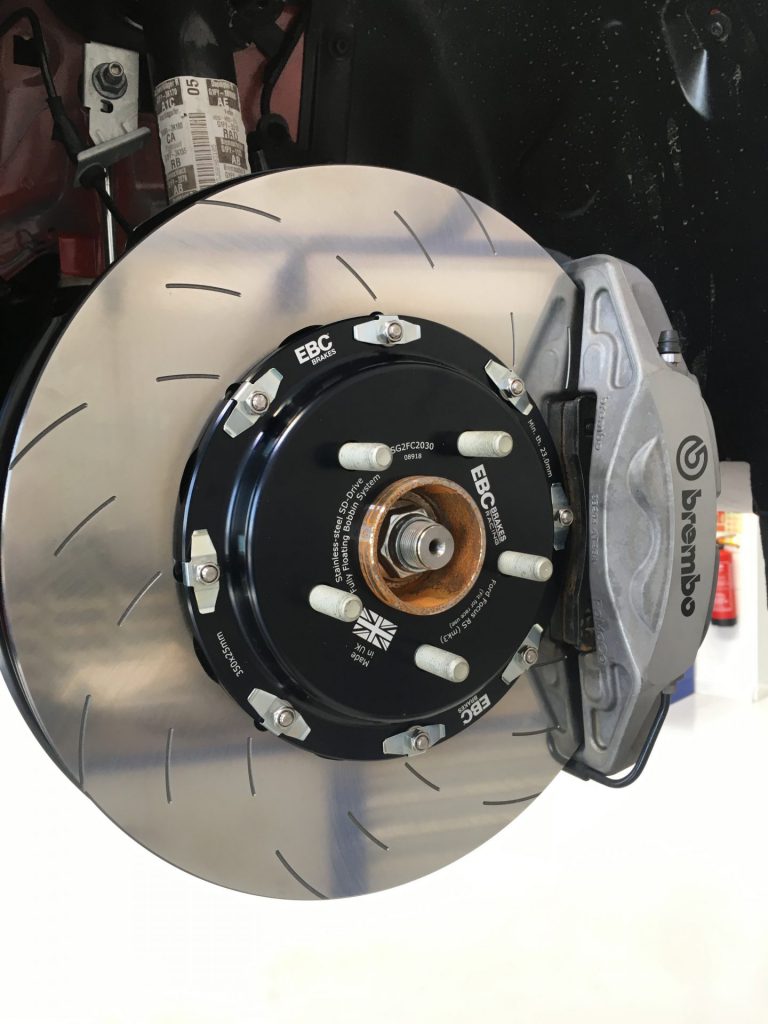
Centre lock
Many race cars have wheels secured by a large single nut. The hub has a protruding thread and usually a spigot or taper seat to centralise the wheel. The driving torque is transmitted by pegs in the hub that locate in the wheel or the wheel and hub have corresponding splines. The correct torque for the centre nut should always be observed.
The peg drive wheels normally have a locking pin to retain the nut. The spline type is often right-hand or left-hand thread so they will tighten on normal rotation. Some cars that have normal hubs can be converted by bolt on centre lock adapters, these will be supplied with the correct fixings to hold in place.
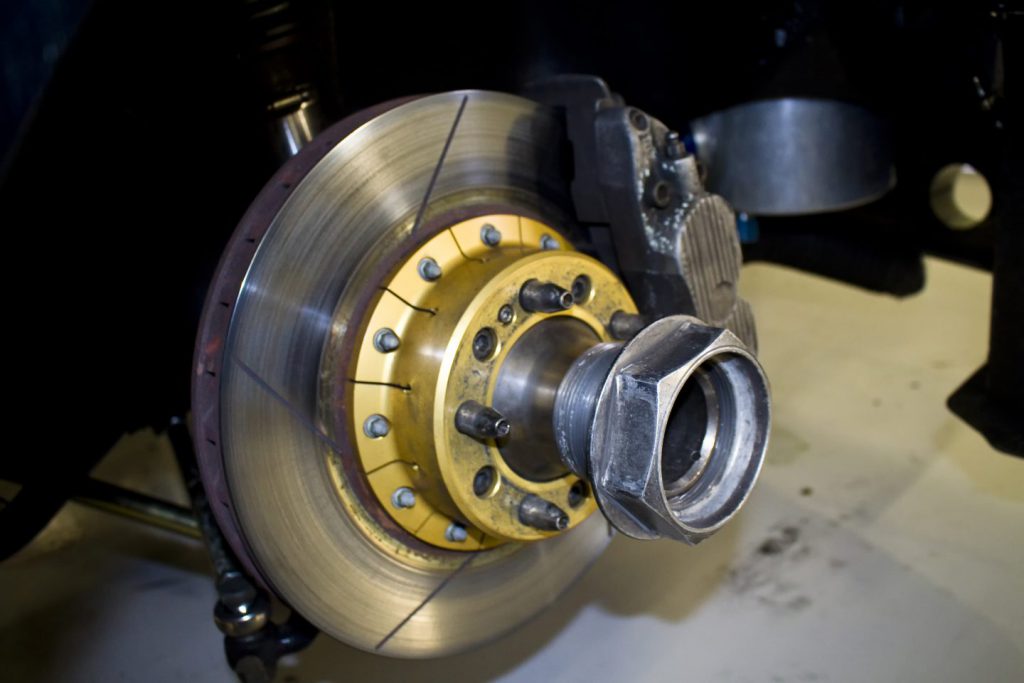
Wheel bolt or nut fitting guide
When fitting new wheels or new fixings the following should be adhered to for safety:
- M12 x 1.25 or ½ “UNF 8 rotations of thread
- M12 x 1.5 or M12 x 1.75 6.5 rotations of thread
- M14 x 1.5 7.5 rotations of thread
- M14 x 1.25 9 rotations of thread
If this amount of rotations is not possible longer studs or bolts will be required.
Competition wheel spacers
There are several types of wheel spacers available, and the guide below shows each type. Wheel spacers can be used to increase the track width for stability and looks, and can also be used to correct the offset on wheels that otherwise would foul the brakes or suspension.
Spacer shim universal
These are simple spacers typically 3, 5, or 6mm thick. The centre bore is large so will fit most cars. They can be 3-hole, 4-hole, 4/5 hole and 5-hole type. The holes are generally slotted so the spacer will fit many applications and are useful if increased brake clearance is required.
They are very cost effective but do not locate on the hub spigot so can be difficult to centralise. Care should be taken the wheel is still located by the spigot and the bolts / studs are long enough.
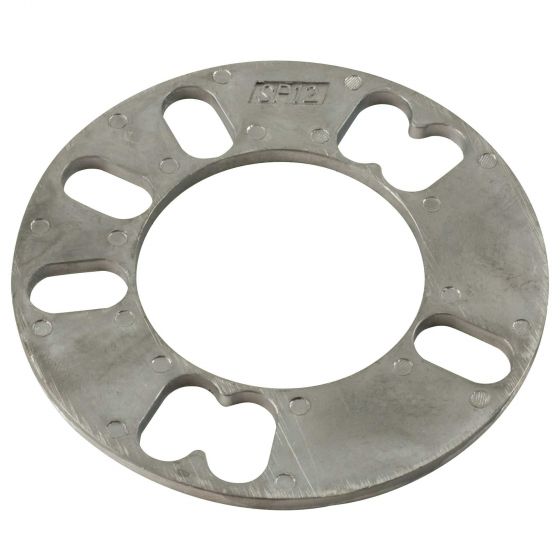
Spacer shim car specific
These are as above but machined in the centre to locate on the wheel hub, so no radial movement is possible. It is good policy to check the depth of the hub spigot to ensure the wheel will still be centralised. If a 6mm spacer is chosen and the hub spigot is 6mm there will be no spigot protrusion left for the wheel to locate on. (Please note many cars have different depth spigots front and rear).
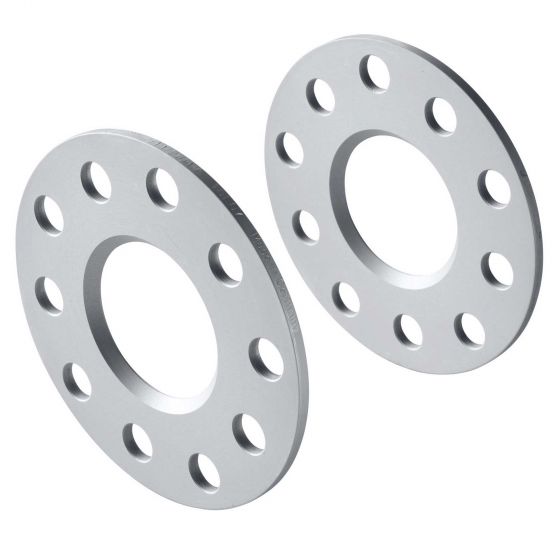
Hub centric wheel spacers
The hub centric wheel spacer has a protruding nose to locate the wheel and a corresponding machined hole at the rear to locate the spacer on the hub face. This allows the weight of the vehicle to be transferred safely via the spacer. This type of spacer can be 10mm per side right through to 50mm. The spacer kits for cars with bolts up to around 30mm will use with longer bolts and the wider versions will bolt to the hub with bolts provided and then have a set of tapped holes in the spacer for the existing bolts. The spacer kits for cars with studs up to 30mm will need longer studs, the wider versions will bolt to the hub using wheel nuts in the kit. The spacer will have longer studs protruding from the spacer outer face. These will fit the existing nuts.
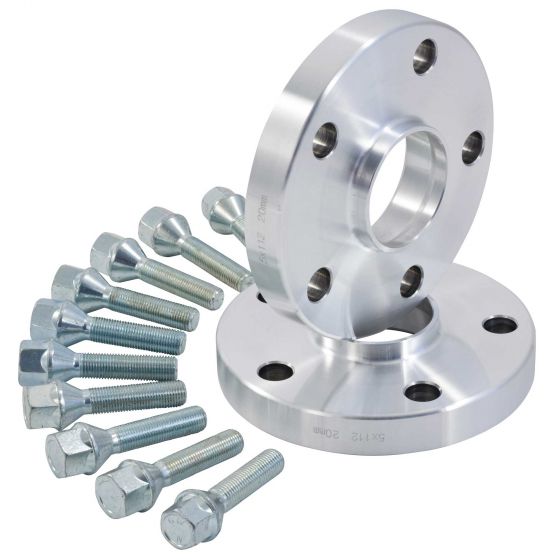
Bolt-on adapters
The bolt on type spacer principle above can be used to provide a new bolt pattern. The spacer adapter will bolt to the hub and the different or new bolt pattern will be in between these bolt holes ( either female tapped or studs protruding ) This can be useful if the wheel required is not available in the standard hub P.C.D.
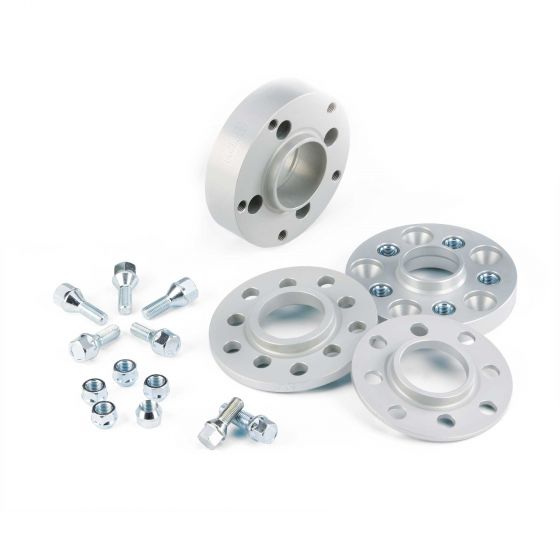
We hope you find the guide useful and you finish your event all wheels present and correct. We have parts for just about any application. If you are unable to find the required parts please do not hesitate to get in touch with a member of the Demon Tweeks team.
